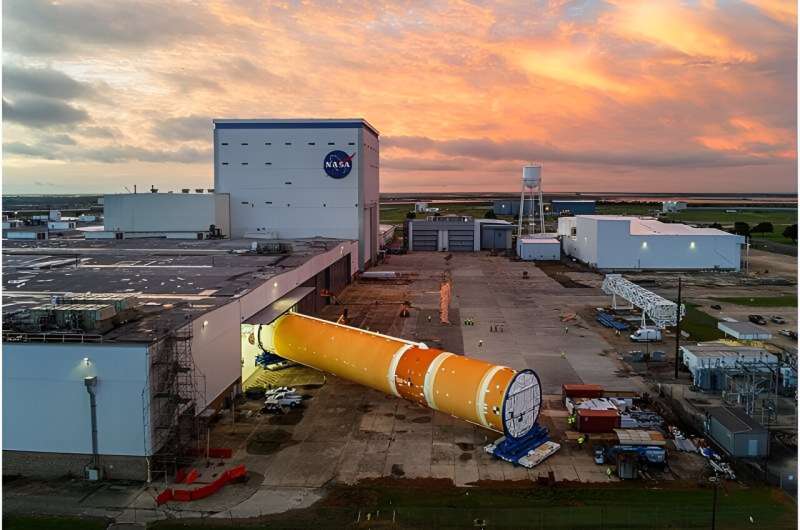
Copernical Team
Expiring medications could pose challenge on long space missions

Medications used by astronauts on the International Space Station might not be good enough for a three-year journey to Mars. A new study led by Duke Health shows that over half of the medicines stocked in space—staples such as pain relievers, antibiotics, allergy medicines, and sleep aids—would expire before astronauts could return to Earth.
Astronauts could end up relying on ineffective or even harmful drugs, according to the study appearing July 23 in npj Microgravity.
"It doesn't necessarily mean the medicines won't work, but in the same way you shouldn't take expired medications you have lying around at home, space exploration agencies will need to plan on expired medications being less effective," said senior study author Daniel Buckland, M.D., Ph.D., an assistant professor of emergency medicine at Duke University School of Medicine and an aerospace medicine researcher.
Expired medications can lose their strength by a little—or a lot. The actual stability and potency of medications in space compared to Earth remain largely unknown. The harsh space environment, including radiation, could reduce the effectiveness of medications.
Buckland and co-author Thomas E.
NASA's Artemis II moon mission rocket core stage on way to Kennedy Space Center

The biggest piece of the puzzle to send humans on a trip around the moon for the first time in more than half a century is on its way to Kennedy Space Center.
The Boeing-built core stage of NASA's Space Launch System rocket was loaded onto NASA's Pegasus barge from the Michoud Assembly Facility in New Orleans, and is now taking the 900-mile trip to Florida.
The flight hardware that includes the four RS-25 engines made by Aerojet Rocketdyne from the space shuttle era will then be taken to the Vehicle Assembly Building where it will be turned upright standing 212 feet tall. It will be married to other components of the SLS rocket including two solid rocket boosters from Northrop Grumman that when combined produce 8.8 million pounds of thrust on liftoff.
The next flight is Artemis II, which is targeting launch from KSC's Launch Pad 39-B no earlier than September 2025. That mission will take NASA astronauts Reid Wiseman, Victor Glover and Christina Koch along with Canadian astronaut Jeremy Hansen on a trip out to the moon and back aboard the Orion spacecraft built by Lockheed Martin.
ESA and UK Space Agency announce new funding call

ESA and the UK Space Agency are pleased to announce a new joint funding call ‘InCubed2 - Innovation in Public Services with Satellite Earth Observation’ for all UK-based entities developing innovative and commercially viable Earth observation projects. The deadline for pitch proposal submissions is 12 September 2024.
Sentinel-2C arrives in French Guiana

The Sentinel-2C satellite, the third Copernicus Sentinel-2 satellite, has arrived at the European spaceport in French Guiana for liftoff on the final Vega rocket in September. Sentinel-2C, like its predecessors, will continue to provide high-quality data for Copernicus – the Earth observation component of the EU Space Programme.
Renesas unveils space-grade power management solution for AMD Versal AI Edge SoC
 Renesas Electronics Corporation (TSE:6723), a leading supplier of advanced semiconductor solutions, has announced a comprehensive space-ready reference design for the AMD Versal AI Edge XQRVE2302 Adaptive SOC. Developed in collaboration with AMD, the ISLVERSALDEMO3Z power management reference design incorporates key space-grade components for effective power management.
This design targets
Renesas Electronics Corporation (TSE:6723), a leading supplier of advanced semiconductor solutions, has announced a comprehensive space-ready reference design for the AMD Versal AI Edge XQRVE2302 Adaptive SOC. Developed in collaboration with AMD, the ISLVERSALDEMO3Z power management reference design incorporates key space-grade components for effective power management.
This design targets Diatom surprise could rewrite the global carbon cycle
 When it comes to diatoms that live in the ocean, new research suggests that photosynthesis is not the only strategy for accumulating carbon. Instead, these single-celled plankton are also building biomass by feeding directly on organic carbon in wide swaths of the ocean. These new findings could lead researchers to reduce their estimate of how much carbon dioxide diatoms pull out of the air via
When it comes to diatoms that live in the ocean, new research suggests that photosynthesis is not the only strategy for accumulating carbon. Instead, these single-celled plankton are also building biomass by feeding directly on organic carbon in wide swaths of the ocean. These new findings could lead researchers to reduce their estimate of how much carbon dioxide diatoms pull out of the air via Waning Sea Ice Reflectivity Intensifies Global Warming
 Research led by scientists at the University of Michigan reveals a substantial decline in the cooling power of sea ice, with the Arctic losing around 25% and the world losing up to 15% since 1980. This study utilized satellite data spanning from 1980 to 2023 to measure cloud cover and the solar radiation reflected by sea ice.
The researchers discovered that the reduction in sea ice's cooli
Research led by scientists at the University of Michigan reveals a substantial decline in the cooling power of sea ice, with the Arctic losing around 25% and the world losing up to 15% since 1980. This study utilized satellite data spanning from 1980 to 2023 to measure cloud cover and the solar radiation reflected by sea ice.
The researchers discovered that the reduction in sea ice's cooli GKN Aerospace Unveils Pounds 44M H2FlyGHT Project for Hydrogen-Electric Propulsion
 GKN Aerospace has introduced H2FlyGHT, an ambitious Pounds 44 million project aimed at developing a 2-megawatt (MW) cryogenic hydrogen-electric propulsion system. This innovative initiative seeks to advance the future of sustainable aviation by focusing on the next generation of larger, eco-friendly aircraft.
H2FlyGHT builds on the foundation laid by the H2GEAR project, incorporating adva
GKN Aerospace has introduced H2FlyGHT, an ambitious Pounds 44 million project aimed at developing a 2-megawatt (MW) cryogenic hydrogen-electric propulsion system. This innovative initiative seeks to advance the future of sustainable aviation by focusing on the next generation of larger, eco-friendly aircraft.
H2FlyGHT builds on the foundation laid by the H2GEAR project, incorporating adva GKN Aerospace Supplies Key Components for Supernal's eVTOL Technology Demonstrator
 GKN Aerospace has successfully delivered the complete composite wing assembly for Supernal's first electric vertical takeoff and landing (eVTOL) demonstrator aircraft. By the end of July, GKN will also provide the booms for this Full-scale Technology Demonstrator (FSTD), which is set to begin flights later this year. These components are crucial for the development of Supernal's eVTOL vehicle, a
GKN Aerospace has successfully delivered the complete composite wing assembly for Supernal's first electric vertical takeoff and landing (eVTOL) demonstrator aircraft. By the end of July, GKN will also provide the booms for this Full-scale Technology Demonstrator (FSTD), which is set to begin flights later this year. These components are crucial for the development of Supernal's eVTOL vehicle, a 
